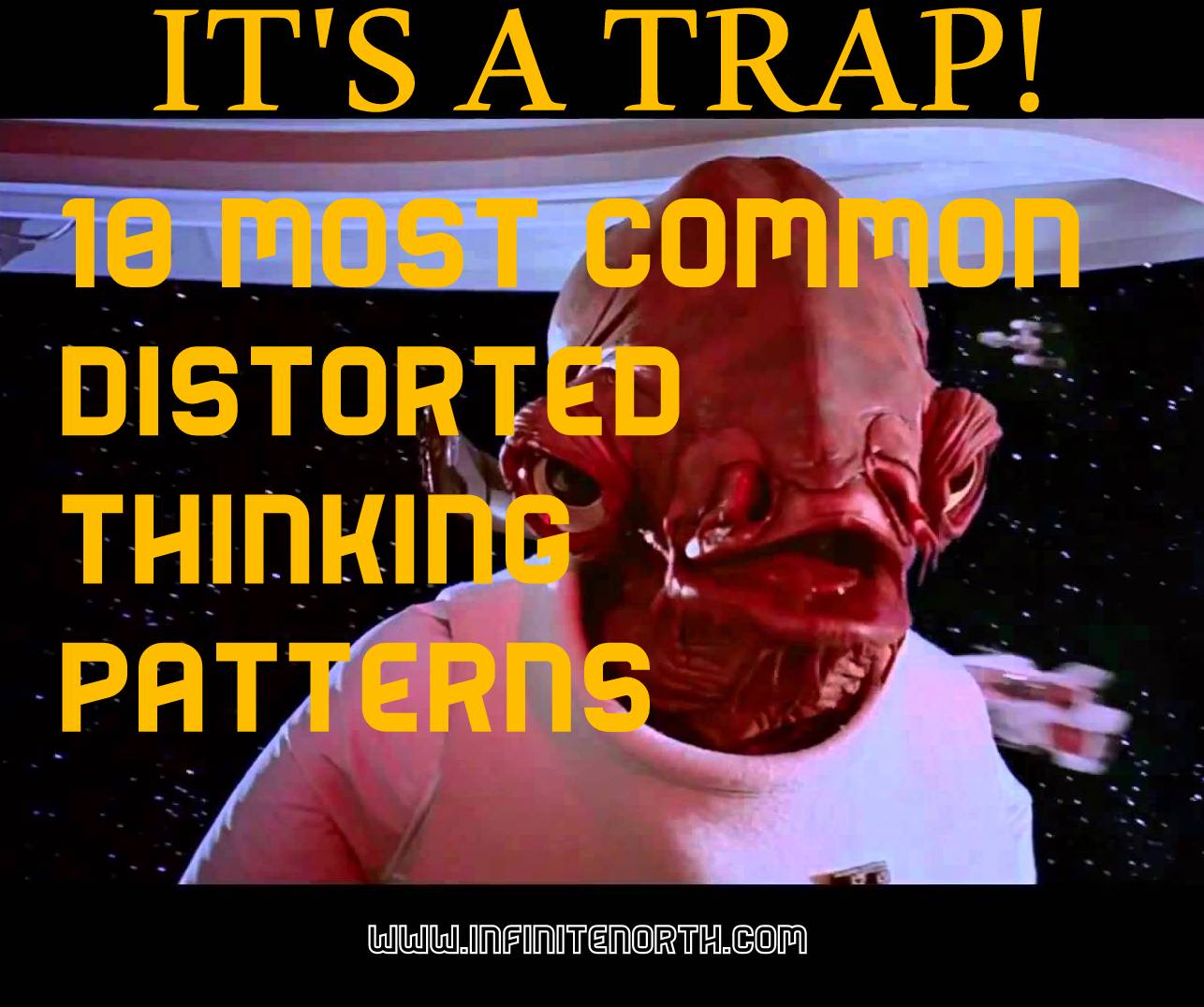So far we have explored distortions that created catastrophes from our imagination and another that was the least helpful filter ever then we looked at how the polarization of thought impacts us and the dramatic limitation of “mind-reading.” Then, it was on to Emotional Reasoning and Should Statements. Last time we examined the destructive nature of unnecessary Personalization and the “ALWAYS” scary False Permanence
- Catastrophizing
- The Mental Filter
- Black-and-White Thinking
- Mind-Reading
- Emotional Reasoning
- ‘Shoulding’
- Personalization
- False Permanence
- Blaming
- Magical Thinking
Let me remind you – as you begin to challenge these distortions, for effective change, take the time to write down the specific unhelpful thoughts as you recognize them and write down the alternative thinking patterns that will set you on the path to healthier perceptions of your experiences. You’ll see overlap in how these patterns feed into one another, each one making the others a little easier to believe, creating a seemingly unified (albeit distorted) vision of life. Don’t be fooled.
- Blaming: This particular distorted thinking pattern is a sneaky one. It infiltrates common language usage on a daily basis. Any time you use “________ makes me feel _______,” you’re using a form of blame to distance yourself from the emotional experience. “You make me so angry” is a statement that blames someone else for your emotional experience. Blame (like should) carries inherent judgment which can be personally and interpersonally destructive. Blaming others in this away also pushes you away from other people, creating conflict rather than resolution. Blame isn’t just for emotions though.
Blame is an equally damaging distortion when applied to our own behaviors. “They made me do it” is a harmful way to escape the discomfort of personal responsibility; however, if others are in control of how you feel and what you do….the whole world becomes very unpredictable and unstable. If you’re in the habit of blaming other people, or even circumstances, for your emotions and behavior, it creates a mentality that falsely absolves you of personal responsibility and strips your sense of self-efficacy. Blaming, therefore, becomes a backhanded attack on your own capacity to validate your emotions and manage your behaviors. If everyone/everything is always responsible…you can never feel successful.
Blame also paints you into a corner in terms of personal identity. Blame creates a narrative with only one identity – righteous victim. This role can protect you from vulnerability. It can mask feelings of pain and helplessness with righteous anger, but people can also get stuck in that role, remaining hurt, powerless, and angry.
Challenging Blaming: The simple answer? Stop blaming other people or circumstances for your feelings and conditions. Clearly, the solution is more complex than that, but it’s a good place to start. Start by rephrasing the way you express emotions. “That movie made me sad” becomes “I feel sad when I watch movies about true love.” Work to be consistent in your expression and start with “I feel ______ when _________.” The difference may seem subtle, but the language we use (even in our own heads) has a huge impact on how we experience the world around us. “You make me so mad” becomes “I feel angry when it seems like you’re ignoring me.” Work to observe your feelings and circumstances without judgment or blame, and look for values-based actions you can take to move toward solutions. Reflect, share, or journal to validate your emotions, and practice acceptance of those emotions without blame. Create a narrative that acknowledges your personal choices as well as your capacity to make different choices moving forward. Choose to build a personal identity consistent with the competent and capable individual that you are, and avoid falling into the “righteous victim” role.
- Magical Thinking: Magical Thinking distorts thoughts by shouting “TRUTH!” to the adage, “the grass is always greener…” This type of thinking establishes false hope and wastes energy as people chase after frivolous, empty goals. It often postpones meaningful action and shifts attention away from effectiveness. Happiness or success or some version of those two is perpetually at your fingertips or just an arm’s length away. “If I lost 10 pounds I’d be happy.” “If I had a new boss, I’d love my job.” “If I could just move away for a while, everything would be different.” The examples are endless, “If only he would….If only she said…If only they did…If only I was…” In the meantime, while you wait for things and people around you to change, you’ve remained unhappy and stagnant. Or perhaps you’ve exhausted yourself trying to make those things happen, only to find that checking that box didn’t deliver happiness at all. Finding contentment in life will never be about checking a box, accomplishing a goal, or attaining some external status. Contentment comes from a way of being, an internal shift in how you perceive and experience the world around you. Magical thinking works to convince you of the opposite.
Challenging Magical Thinking: Work with what you have. Remind yourself that contentment is not just around the corner, but can be achieved regardless of the current circumstances, and happiness, just like all emotions is not a permanent destination. Use “if only” as a red-flag that prompts you to rewrite the script. “If only I lost 10lbs, I could be happy with how I look” becomes “My body is amazing just how it is…and I’m setting a goal to eat more vegetables and exercise three days a week. I know that my mind and body feel better when I’m eating a nutritious diet and working out regularly.” Success no longer hinges on the external outcome. Allow yourself to be successful in the process, focusing on HOW you work toward a goal rather than arriving at the destination. Acknowledge your efforts in-the-moment and evaluate success based on the way you engage rather than the long-term outcome. “I would have been so happy if only I got an A in that class” changes to “I’m proud of the student I was last term even though I didn’t get an A.” The focus shifts to how – with commitment, dedication, and effort – rather than what. Magical Thinking takes you out of the present moment, so the challenge is to remain in the present and focus on taking values-based actions…and allow that to be an accomplishment you can celebrate.
You can find a downloadable PDF outline of all ten of the most common distorted thinking patterns here: Top Ten Distorted Thinking Patterns.



